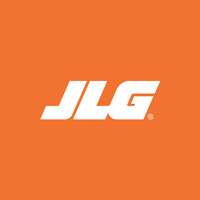 JLG Industries, Inc.
JLG Industries, Inc.
World-leading access equipment manufacturer
____
McConnellsburg, PA
There are many ways to communicate safety policies and goals to your team, from toolbox talks to in-depth safety training. But one way to ensure teams across your organization receive a consistent, daily reminder is to create informative safety signage.
Communicating clear safety messages not only helps to prevent workplace injuries, but it can also lead to increased productivity, profitability and employee engagement. When you post signs where a safety incident is most likely to occur—such as near equipment, in stairwells and by entryways to PPE-required areas—you reach employees at the exact moment where they can make a positive safety decision. This helps keep safety top of mind, no matter the task.
It’s important to note, too, that safety signage must evolve as our industries and environments change. For example, the onset of COVID-19 has generated many new safety messages. Businesses of all types now display signs about social distancing and hand washing to help keep employees and customers safe.
But despite changes in messaging, there are four basic principles you can apply to create engaging, successful safety signage.
1. Keep Text Simple
Remember that safety signage is meant to remind people, not to train them. So, think about the safety training your employees receive and boil it down to the most important messages. Keep them clear and concise, and try using numbers, symbols and icons to shorten the text. This allows people to read and digest signs quickly as they’re working. If you have longer, more detailed information to share, save it for your safety huddle. Or, try adding a URL or QR code to your safety signage so people know where to go for more information.
Remember that safety signage is meant to remind people, not to train them.
2. Include Images & Illustrations
Studies have shown that people remember images far better than they remember text. Consider what images might help illustrate the point of your safety sign. In some cases, there’s already a recognizable image to accompany the message, like the icon on a wet floor sign. But if you’re selecting your own imagery, make sure you choose visuals that are the right blend of attention-grabbing, high-quality and clear. The last thing you want to do is pair a safety message with an unrelated image that confuses your employees rather than helping them stay safe.
3. Apply Recognizable Colors
When choosing colors for your safety signage, it’s a good idea to start with OSHA’s and ANSI’s recommended safety colors . Many of these colors are already understood in the wider world, like using red to mean “stop” and yellow to mean “warning,” so they’ll be easier for employees and customers to understand. Your organization may also have its own specialized system where environments, processes or even products are already color-coded. In that case, make sure that the colors you use on your safety signs remain consistent with what your organization already uses.
4. Use Content Wisely
Because you have so few words to make your point on a safety sign, it’s important to choose your words carefully. The best safety signs include messages with the following tone:
- Informative: A sign that delivers an important, bite-size piece of information
- Examples: Statistics, goals, training times
- Motivating: A sign that encourages employees to do the right thing and recognizes those who do
- Examples: Days without injury, kudos, benchmarks achieved
- Inclusive: A sign that builds a relationship between your organization and its employees
- Examples: Birthdays, safety quotes, safety trivia
By following these simple tips, you can create safety signage that informs and motivates your staff. And remember, just as safety signage should evolve when changes occur in your industry, it should also be refreshed regularly to keep employees engaged.
Want to stay up to date with industry news and trends similar to this? Make sure you subscribe below to receive monthly updates from DirectAccess with newly posted content, so you never miss important information.